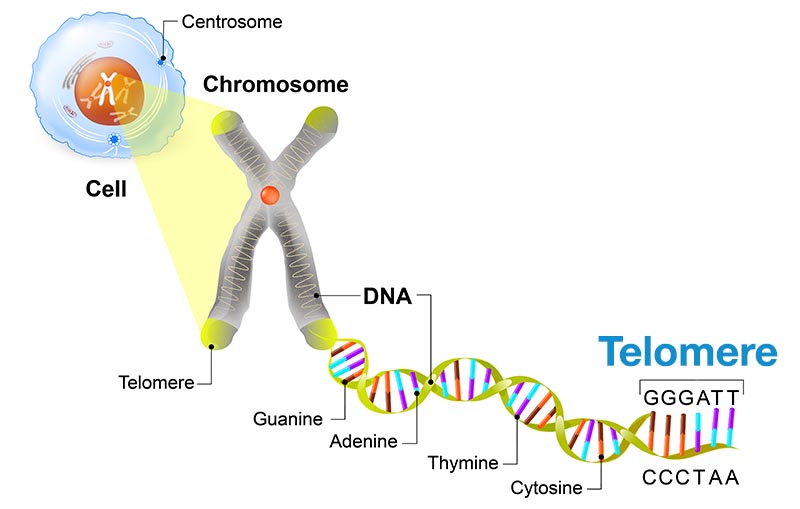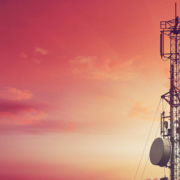A Closer Look at NAD+ Brain Restoration Therapy
In our effort to provide the most innovative, advanced, and effective therapies to promote healing of the body, mind and spirit, we now turn our attention to NAD BR+ (Brain Restoration) therapy. Although not-well known in the medical field (yet), this therapy boasts benefits that include:
- Restoring cellular production of energy (ATP)
- Protecting and repairing DNA (PARP)
- Strengthening the immune system (improved cell signaling of Immune-CD38, CD157)
- Anti-aging impact via increased tankyrase activity / longer telomeres
- Lowering cholesterol and blood pressure
- Stimulating production of dopamine, serotonin, and noradrenaline, thereby improving mood and brain function
- Improving athletic endurance and combating fatigue
To gain more insight on this completely nutrient-based and safe specialized therapy, we turned to one of the pioneers of NAD BR+ Therapy, Richard Mestayer, M.D., of the Springfield Wellness Center, the first and longest operating clinic to provide NAD Brain Restoration Plus treatment (BR+) in the United States.
What is NAD+?
As we grow older, certain genes can be triggered that accelerate degenerative aging processes. This can result in symptoms such as chronic fatigue, loss of mental clarity, depression, stress, anxiety, and various other chronic illnesses. A critical factor in this process is a coenzyme by the name of nicotinamide adenine dinucleotide (NAD+), that enables the transfer of energy from the foods we eat to vital cell functions, especially in the brain. Every cell in the body needs it. This compound is required to “turn off” those genes that accelerate aging. The problem comes when NAD+ levels begin to decline, either due to lifestyle, diet, use of drugs or alcohol, stress, toxins, or a host of other factors.
“NAD+ is probably as important as oxygen to make cells work,” Dr. Mestayer explains. “It’s in every cell of your body; it’s in every mitochondria. It has multiple functions. We’re still learning the new nuances, but it’s important and involved with DNA repair, cellular function including energy production, promoting cell health – that’s why it’s involved in longevity – and immunity. It is involved in a multitude of reactions: redox reactions – it could help reduce oxidized stress – and we think it helps to reduce inflammation generally as well.”
Nicotinamide adenine dinucleotide is essential for mitochondrial health. As Dr. Mestayer states, “NAD+ is probably as important as oxygen to make cells work.”

Modern Life and the Impact on NAD+ Production
The rigors of modern life have taken a toll on the levels of NAD+ in our bodies. Three main factors are to blame for NAD+ deficiencies:
Stress: We simply can’t seem to escape it in today’s rat race environment. Stress has become commonplace, with the American Psychological Association linking chronic stress to the six leading causes of death: heart disease, cancer, lung ailments, accidents, cirrhosis of the liver and suicide. Add in oxidative stress, where an imbalance between the production of free radicals and the ability of the body to counteract with antioxidants occurs, and you create an environment where NAD+ is being depleted quite quickly.One such biomarker of oxidative stress is 8-Isoprostane. This prostaglandin-like compound is produced by free radical-catalyzed peroxidation, and has been suggested to be the most reliable approach to monitor oxidative stress. High levels of 8-isoprostane is an indication of oxidative damage and a reduction in available NAD+.
“I think the biggest issue that keeps the levels down is the extreme use of it. If you have a lot of oxidative stress, you’re going to use more and deplete. If you have a lot of DNA repair which happens as you get older, you’re depleted”, says Dr. Mestayer.
Diet / Alcohol / Drugs: Part of the reason for NAD+ deficiency is that diet and what you put in your body is critical. “You get [NAD] from your diet. The body doesn’t make NAD unless there is something put in like Vitamin B3 or tryptophan,” Dr. Mestayer adds. The modern day diet for most has resulted in the abandoning of traditional, whole foods in favor of modern processed foods high in sugar, refined flour and unhealthy fats.In addition, the use of alcohol and drugs are contributors of NAD+ depletion. Studies have demonstrated the efficacy and safety of IV NAD in detoxifying patients from alcohol, opiates, tranquilizers and stimulants. Clinical experience has shown benefits in greatly reducing withdrawal symptoms, as well as reducing, and often eliminating associated cravings.
Inflammation: Inflammation has become a major issue and contributing factor in a majority of common chronic conditions. Simply put, inflammation is your body’s response to stress – whether it be from diet, emotions, lifestyle, or environment. One particular component of inflammation that is associated with NAD+ depletion is a glycoprotein called CD38. Found on the surface of many immune cells, CD38 plays an important role in inflammation. CD38 causes migration of neutrophils and monocytes toward sites of inflammation, signals maturation of dendritic cells during inflammatory cytokine activation, and generates Ca2+mobilizing metabolites. To do this though, it must consume large amounts of NAD+.Dr. Mestayer explains: “If you have a lot of immunity issues – there’s a compound called CD38. CD38 is a tremendous utilizer of NAD and it is very much involved in reducing inflammation and bolstering immunity. CD38 is also involved in oxytocin production, so there’s a link between NAD and oxytocin production – which is all new stuff.”
NAD+ and Relation to Other Conditions
Addiction: Restoration of proper brain biochemistry is a major requirement for breaking any addiction, restoring clarity of mind, stabilizing moods, and reducing or eliminating cravings. Dr. Mestayer and Springfield Wellness Center have helped hundreds of patients break free of alcohol and drug addictions with minimal or no withdrawal. According to Dr. Mestayer, “We’ve shown a tremendous reduction in a compound, 8-Isoprostane. It’s a marker for oxidative stress. So we’re actually demonstrating a reduction in oxidative stress in our addiction patients. Nobody has really studied that in addiction patients. We only assumed that.”
Degenerative Diseases: Current research also indicates that NAD deficiencies may trigger a host of metabolic and degenerative diseases—including obesity, Type II diabetes, Alzheimer’s, amyotrophic lateral sclerosis (ALS), and Parkinson’s. NAD+ treatment has been shown to be capable of dramatically reducing related neurological symptoms. Although more research needs to be done, these results are consistent numerous known benefits of NAD + which is an essential component of energy production (mitochondrial function); heavily involved in DNA repair and cell repair; responsible for turning certain genes on and off; and essential for maintaining neurotransmitter levels, for the proper functioning of the brain.
Anxiety, Depression & PTSD: NAD+ is essential for maintaining proper levels of neurotransmitters—intricately involved in brain communications. NAD also plays a role in DNA repair, and in turning genes “off” and “on.” We also know that NAD levels are depleted when the body is dealing with illness, addiction, environmental toxins (including medications) and stress. So, if depression is caused by one or a combination of the following: faulty mood regulation by the brain, genetic vulnerability, stressful life events, medications, and medical problems, it’s likely that NAD plays a role in resetting the brain to regulate moods appropriately and get you feeling good again.
Sleep Disorders: Our sleep and wake cycles are dictated by circadian rhythms. These biological rhythms of life are established and maintained by a central clock consisting of around 20,000 pacemaker neurons in the supra-chiasmatic nucleus (SCN). Along with NAD+, Nicotinamide phosphoribosyltransferase (NAmPRTase or Nampt) helps to drive the circadian clock feedback cycle through SIRT1, a protein also known as NAD-dependent deacetylase sirtuin-1. As levels of NAD+ oscillate over the day/night cycle, the activity of SIRT1 oscillates with it, linking the metabolic state of the cell through an epigenetic mechanism to the circadian clock. Therefore, a deficiency of NAD+ has been associated with circadian dysfunction and sleep disorders.
Autism: NAD has been linked to social behavior as it relates to oxytocin. Through studies in people, researchers have shown that oxytocin plays a vital role in many social behaviors, such as the building of trust between strangers and the bonding between mother and child. Autism, a spectrum disorder (ASD), is characterized by social and communication impairment, and linked to significant defects in the OXT system. Many recent clinical trials have been focused on providing oxytocin nasal spray to improve social abilities, however brain oxytocin secretion is regulated by NAD+ metabolites, and natural supplementation of NAD+ can have a direct impact on OXT release and improvement in social function.
NAD+ and Aging
Compelling research shows that NAD+ has a unique ability to protect tissues, induce DNA repair, and increase life span. To understand how NAD+ can prevent aging, we have to look at an increasing subject of aging – telomeres. Telomeres form the ends of human chromosomes. Without them, DNA strands become damaged and our cells can’t do their job. They basically act as the aging clock in every cell. The issue arises because telomeres shorten with each round of cell division, and shortening can be exacerbated by a number of other influences. Shorter telomeres are linked to an increased incidence of disease and premature cellular aging. Other studies have associated short telomeres with a decrease in bone mineral density in women and immune functioning.

Research has shown the correlation of NAD+ and telomere length. Increased NAD+ availability can increase tankyrase removal of Telomeric Repeat Factor 1 (TRF1). TRF1 is a protein that binds at telomere ends, and is known to protect telomeres from DNA mechanisms that are used for repair purposes and at the same time regulate the activity carried out by telomerase. This action in turn improves telomerase access and elongation of the telomere, which is important in slowing of the aging process.
NAD+ and the Brain
One of the most impacted organs from NAD+ deficiency is the brain. NAD+ plays a vital role in the brain, with a 2007 study stating, “NAD+ and NADH (the reduced form of NAD+) may also mediate brain aging and the tissue damage in various brain illnesses. Our latest studies have suggested that NADH can be transported across the plasma membranes of astrocytes, and that NAD+ administration can markedly decrease ischemic brain injury. Based on this information, it is proposed that NAD+ and NADH are fundamental mediators of brain functions, brain senescence and multiple brain diseases.”
NAD+ helps to replenish the supply of neurotransmitters, improve cognitive functioning, withdraw from addictive substances, overcome anxiety, depression, chronic or acute stress, post-traumatic stress, CTE, and other conditions by giving the brain what it needs to return to proper functioning. NAD+ has been shown to be effective with cases of brain fog, cognitive impairment, and “chemo brain”. It has a powerful capacity to “reset” the brain to its original set point.
“That’s the thing we see almost across the board – people feel much more mentally clear.”
How NAD BR+ Therapy is Different

After numerous years of looking for the right formula to maximize delivery of NAD+, NAD BR+ was created. Administered both in intravenous form as well as a nasal spray, the proprietary formula is compounded in a state-of-the-art, FDA-regulated facility, that can only be found in a small number of medical offices in the world and requires special licensing and training. “The thing that distinguishes the NAD BR+ product, and the way the protocols distinguish themselves are the added experience of all the clinicians when we compile information,” states Dr. Mestayer. “For instance, in our protocols now we’re using a lot of Liposomal C. We don’t use the IV C because we’re trying to preserve patients veins because we’re giving them 10 days of IVs and these are people who may have used their veins for IV use. So we have to be careful about that. We’re also using amino acids that we’re blending in.”
The quality and formula separate it from other NAD+ therapies and supplements. As Dr. Mestayer puts it, “Well first of all, it’s the best form of NAD. It’s the most pure that we have been able to find. We have tested every raw material in the world, and it is the purest and the most potent, so to speak. The problem with impurities are….you would be surprised. We found other things like lead and mercury. You know, if you got a 92 percent pure product, what’s the other 8 percent? So this product is 100 percent, maybe 99.9 percent pure. I look at all the certificates of analysis, and the other thing is, the pharmacy sends off 1 vial out of 25 for independent analysis. The standard is 1 out of 300, but they exceed the standard because they know it has to be perfect every time. That’s what sets us apart – the purity of the product and the way we use it in protocols and combinations with other nutrients.”
As for safety and side effects, Dr. Mestayer assures that the completely nutrient-based and natural formula is very safe. “There are not any reports or anything of long-term side effects. There’s a short term effect if the drip is going too fast.” The two areas of precaution are those with MTHFR gene mutations (as there is a methylation issue with high doses of NAD) and patients with bipolar disorder (NAD may activate a manic episode in these patients).
Looking for Centers Providing NAD BR+ Therapy?
Both Springfield Wellness Center (focusing on chemical dependence / addiction, PTSD, depression and anxiety) and the New York Center for Innovative Medicine (with a focus on chronic conditions) offer this specialized therapy. Training opportunities for practitioners are also provided via BR+ MD Consultants (225-294-5955).
See how we can help you restore complete health of body, mind & spirit.
Learn how to tap into your unique healing potential by signing up for our newsletter.







Hey my name is Cory DiBenedetto. I currently reside in my Marblehead. I’m a 27 year old male who’s struggled with anxiety/depression my whole life. Lately I’m currently struggling to come off suboxone that I use for a Percocet addiction I used to have. I feel very trapped most of the time and feel like my emotions are almost gone altogether, I’m never happy, just ok or severely depressed and I constantly overthink if I’ll ever really ever regain my life back or be happy. I was curious if you think NAD therapy could help me in any regard to that and what the rates are. I’m a Army Veteran I don’t know if that would make any difference. Any info would be greatly appreciated.
Best regards,
Cory DiBenedetto
Hi Cory,
Thanks for reaching out. There are a few centers in the U.S. that specialize in the treatment of addiction, depression, PTSD and other related symptoms that are utilizing NAD+ Therapy with great results. Two off the top of our heads are Springfield Wellness Center in Springfield, LA and the NAD Treatment Center in San Diego, CA. Our center in New York, the New York Center for Innovative Medicine also provides NAD+ therapies and has treated those suffering with addiction and depression, but in a comprehensive and personalized manner. If you’re interested in speaking with someone, we’d recommend reaching out to the center (info@nycim.com or 631-377-5045) and they can get in touch and tell you more. I hope this helps!
Can I order the nasal spray? I live in Utah.
Jodie
The substance is interesting I am A bit Familiar I will try your formula and interested More